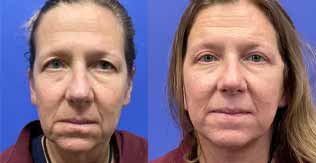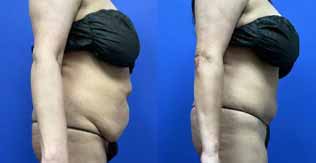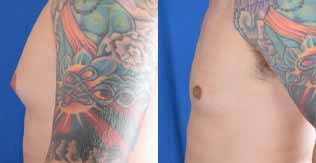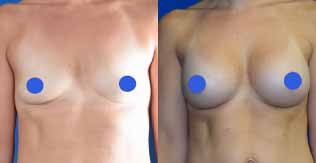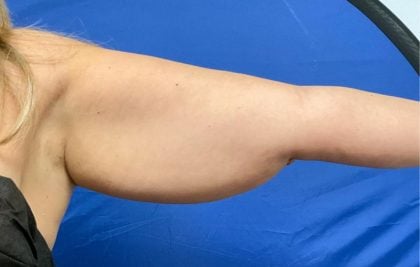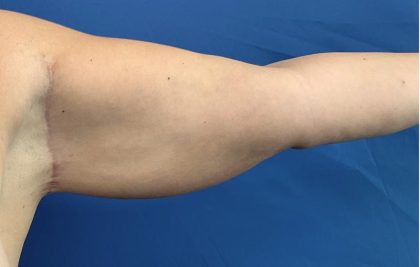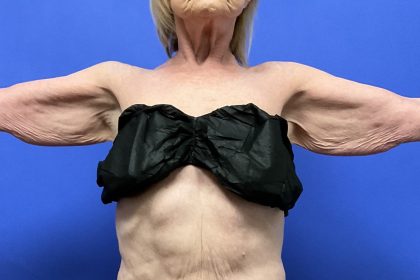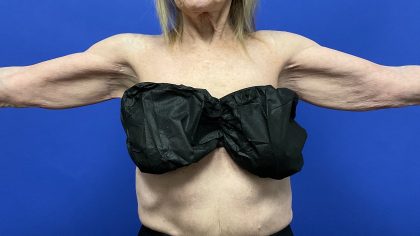Liposuction
Offered at our convenient location in Denver
Patients are often confused by the many technologies and techniques offered for fat removal.
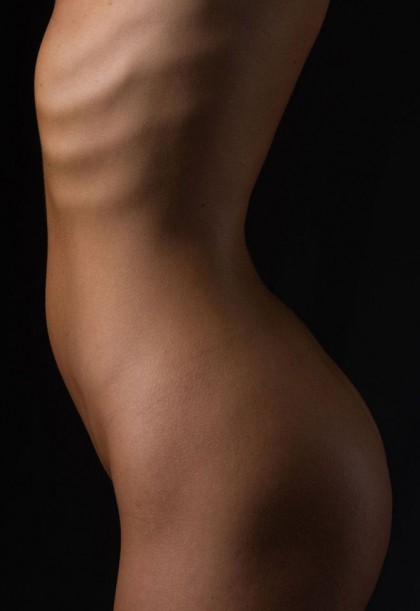
Lets demystify all of this liposuction confusion!
First Things First: Liposuction is not a weight-loss technique. It’s a sculpting technique best suited for normal-weight individuals.
If you have pockets of fat on your otherwise healthy physique that refuse to budge, no matter how much you diet and exercise, liposuction is an ideal way to sculpt the area and eliminate these fat cells from the body. Liposuction slims, smooths, and shapes. We are proud to offer a variety of cutting-edge liposuction techniques to our patients. This guarantees that every patient sees beautiful, natural-looking results that are right for their body and goals.
Interested in improving your figure and eliminating your fat with liposuction? Call to schedule a private consultation at Millard Plastic Surgery.
Contents
- 1 Before and After Photos
- 2 How Does Liposuction Work?
- 3 Variations Of Liposuction
- 4 Areas Of The Body
- 5 What Type of Liposuction Is Right For Me?
- 6 Liposuction vs. Tummy Tuck
- 7 How to Perform a Diver’s Test
- 8 The Four Types/Technologies of Liposuction
- 8.1 Liposuction Types/Technologies
- 8.1.1 Ultrasound-Assisted Liposuction (UAL)
- 8.1.2 VASER Hi Def Liposuction
- 8.1.3 VASER 5-Ring Probe Atraumatic Fat Removal Technology
- 8.1.4 4D VASER Hi Def Liposuction
- 8.1.5 Suction-Assisted Liposuction (SAL)
- 8.1.6 Power-Assisted Liposuction (PAL)
- 8.1.7 Laser Assisted Liposuction (LAL)
- 8.1.8 SAFELipo Liposuction
- 8.1 Liposuction Types/Technologies
- 9 Liposuction Candidate Myth
- 10 Preparation
- 11 The Liposuction Procedure
- 12 Lesser Known / Used Types Of Liposuction
Before and After Photos
How Does Liposuction Work?
Liposuction has evolved from work in the late 60’s by surgeons in Europe who were using primitive techniques until modern liposuction was invented by two Italian gynecologists. Today’s liposuction techniques are more gentle on the body and achieve higher degrees of fat elimination, as well as superior body sculpting, than previously-used liposuction methods.
We know liposuction helps create a sleeker look by removing fat from the body, but how does it work?
Liposuction is a minimally-invasive method of addressing fat that refuses to respond to diet or exercise. The procedure requires only tiny incisions to perform.
Liposuction removes fat by utilizing two primary instruments:
1. Cannula – A hollow tube
2. Aspirator – A suction device
At Millard Plastic Surgery, we perform liposuction to remove patients’ unwanted fat gently and thoroughly. Thanks to Dr. Millard’s advanced experience and ability, our patient’s liposuction procedure will not only slim but also sculpt their body into their desired, attractive contour. The type of liposuction a patient receives will depend on their unique physique, Dr. Millar’s professional recommendations, and the patient’s goals for his or her appearance. We offer a variety of liposuction methods in order to guarantee we can tailor our treatments and outcomes to the exact needs of our patients.
Variations Of Liposuction
- The amount of fluid injection
- Technology / Mechanism in which the cannula works
- Your doctor’s sculpting skills / expertise and experience
Areas Of The Body
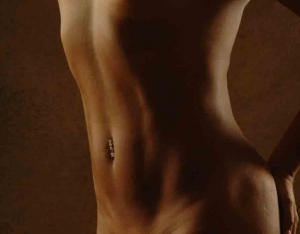
- Abdomen
- Back
- Bra Roll
- Breasts
- Calves
- Cheeks
- Flanks (love handles)
- Gynecomastia (excess male breast tissue / man boobs )
- Hips
- Inner Knees
- Inner Thighs
- Outer Thighs (Saddlebags)
- Pubis
- Submental (chin / gullet)
- Upper Arms
What Type of Liposuction Is Right For Me?
No matter how much of a healthy lifestyle, healthy diet and exercise you do, you may still experience stubborn fatty deposits and loose skin.
No two patients are the same. Dr. Millard custom-tailors your treatment to you. Dr. Millard will work with you to create your ideal, individualized treatment plan during your private consultation.
Unique types of liposuction can help target nearly any body imperfections that bother you; such as the abdomen, hips, thighs, buttocks, and chin, where we perform a variety of body sculpting techniques.
Liposuction vs. Tummy Tuck
Uncertain what type of procedure is best for your body goals? One of the most common questions patients ask is if they should choose liposuction versus tummy tuck. For those with sagging around the stomach, it might not be so obvious if they are dealing with excess skin or excess belly fat.
To gain a better idea of which treatment will be right for you, perform a Diver’s Test. A Diver’s Test is an easy, at-home test you can do on your own to determine if you’re a better fit for a tummy tuck, liposuction or both.
How to Perform a Diver’s Test
- Take off your shirt, bra or any tight clothing that might hold up or tighten your body artificially during this test.
- Stand up straight.
- Wrap your arms behind your back.
- Bend over until your body is at a 45-degree angle.
- Look down to see if there is sagging or hanging skin on your abdominal area.
- You may need a tummy tuck with liposuction:
- If you notice a significant amount of skin folding and moving forward, or hanging downward.
- If a bulge collects on your lower abdomen just above your pelvis
The best way to determine whether liposuction or tummy tuck will achieve your goals is to schedule an in-person consultation with Dr. Millard.
The Four Types/Technologies of Liposuction
It’s important that you have an understanding of the different types of liposuction techniques so you can make an informed decision that’s right for you. Your doctor can help answer any questions and might suggest one technique over the other.
Liposuction Types/Technologies
- Ultrasound-Assisted Liposuction (UAL) with the most popular being VASER Hi Def.
- Suction-Assisted Liposuction (SAL) or what most patients know as “Liposuction”.
- Power-Assisted Liposuction (PAL).
- Laser-Assisted Liposuction (LAL) with the most popular being Smartlipo.
Ultrasound-Assisted Liposuction (UAL)
Originally introduced in 1992, required three generations of evolution to become the state-of-the-art device utilized today in liposuction, liposculpting and fat graft harvesting. Ultrasonic liposuction utilizes a cannula that transmits ultrasound vibrations. These vibrations burst fat cells thereby liquefying it for easy removal. This method is a great option for more fibrous areas like the male breast area or upper back.
After ultrasound-assisted liposuction it is necessary to utilize suction-assisted liposuction technique to remove the liquefied fat.
VASER Hi Def Liposuction
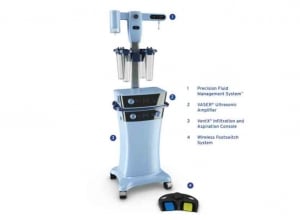
VASER Hi Def Liposuction is the first significant breakthrough in liposuction technology in nearly 30 years after the invention of traditional liposuction. VASER represents the third generation ultrasound-assisted “Liposelective” device.
What makes the VASER system unique is that it’s the first technology that’s “Lipo-Selective,” meaning the combination of the one-, two-, or three-ring ultrasound probes (combined with the Vent-X aspiration technology) to significantly limit damage to surrounding connective tissue, blood vessels, and lymphatic structures (which SAL damages).
This revolutionary technology allowed surgeons for the first time, to safely and reliably remove and shape fat in the upper, superficial fatty layer, along with the deep fatty layer.
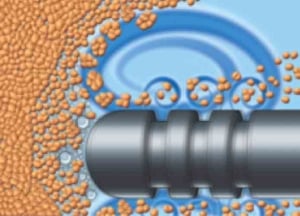
Because of this innovation surgeons can remove more fat per unit area and body part, shape fat around and between muscle groups (VASER Hi Def) and at the same time promote significant skin tightening, by removing the subnormal fat (fat immediately underneath the skin), effectively “Shrink-Wrapping” the skin around the smaller volume of fat left behind during a liposculpting procedure.
Other than traditional liposuction technology, VASER is the first approved technology for the harvesting of the patient’s own fat for transplantation. Several significant and recent publications have proven this out. This development is important, as many of the more recent body sculpting techniques, such as 4D VASER Hi Def incorporate the patient’s own fat into the liposuction procedure, much as a sculptor would move clay around in their sculpting work.
VASER 5-Ring Probe Atraumatic Fat Removal Technology
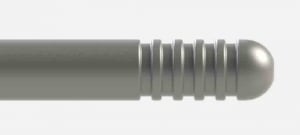
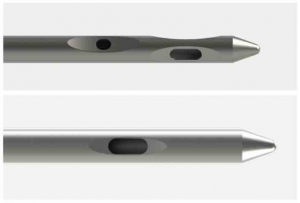
Revolutionary Fat Extraction Cannulas and V5 VASER (5-Ring) Probe Design: Built on the idea of VentX, these high tech fat removal cannulas are designed to be the most “Atraumatic”. They can safely navigate connective tissues, blood vessels and lymphatics, while removing fat.
The 5 Ring Probe was invented and designed by Dr. Millard.
Instrument Innovation Benefits:
- Less pain and bruising
- Less risk of post-procedure bumps or lumps
- Less blood loss
- More aggressive results (in a safe manner)
- Faster recovery
4D VASER Hi Def Liposuction
4D VASER Hi Def Liposuction is essentially VASER Hi Def Liposuction with the addition of one thing; fat grafting. Similar to how a sculpter uses a medium (like clay) to sculpt, a trained surgeon can utilize your purified harvested fat for precise sculpting definition that you’ve always wanted.
Autologous Fat Transfer (AFT) is done under strategic ultrasound guidance for precise placement, resulting in optimum results that were never possible before.
Suction-Assisted Liposuction (SAL)
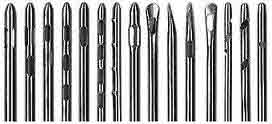
Originally introduced in 1974, and perfected in 1977, this technology has remained unchanged.
Suction-Assisted Liposuction uses a small blunt-tipped tube called a cannula (with holes on the side) to remove fat. These cannulas suck / rip out fat when the suction pressure is turned on.
SAL Benefits: Inexpensive technology, allowing physicians to pass those savings onto their patients.
SAL Disadvantages: The cannulas are “non-specificity” for tissues that surround fat cells. Therefore damaging connective tissue (which aids in healing and skin tightening), small blood vessels and lymphatics.
Many of these tissues are also ‘sucked’ and ‘ripped’ during SAL. For this reason, many surgeons limit their technique to the deep fat layer, avoiding the superficial and sub-dermal fat layers.
Power-Assisted Liposuction (PAL)
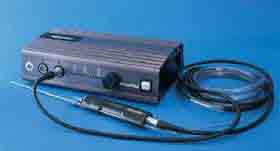
Power Assisted Liposuction is essentially ‘Powered’ Suction Assisted Liposuction (SAL). Utilizing a power device to rapidly vibrate the SAL cannula with the same advantages and disadvantages as SAL.
Very similar to suction-assisted liposuction, this technique utilizes a mechanical cannula so the surgeon doesn’t need to make as many manual back and forth movements.
Laser Assisted Liposuction (LAL)

Originally introduced in 1992, and like UAL, required several generations of evolution to become safe and effective. The SmartLipo Triplex, with it’s three wavelengths, that offers the best in Laser Assisted Liposuction technology.
Laser Assisted Liposuction liquefies fat in the targeted area allowing for easier fat removal.
The heating of fibrous tissue enhances tissue tightness post liposuction. The heat from the laser can also improve homeostasis, reduce bleeding and shorten recovery time.
SAFELipo Liposuction
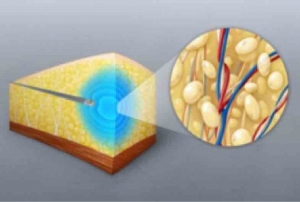
The SmartLipo Triplex, with its three wavelengths, offers the best in LASER-Assisted Liposuction technology. Its advantages include liposelectivity and the ability to coagulate blood vessels for less bleeding and bruising. Its disadvantages include its limited ability to remove large volumes of fat, though it is capable in both the superficial and sub-dermal layers, unlike most SAL devices.
SAFELipo involves three distinct steps to help ensure optimum results.
1. Separation: An ‘exploded’ tip cannula is used with power-assisted liposuction (PAL) to separate targeted fat globules from one another and their surrounding tissues without damaging any nerves or blood vessels. This process allows the fat cells to become loose without the generation of heat. Which eliminates the potentially damaging effects of thermal probes.
2. Aspiration: Once the fat cells are loosened, a very thin cannula is able to aspirate the targeted fat.
3. Fat Equalization: An equal distribution of fat cells under your skin is essential for enhanced long-term results. This final step allows for the fat to be evened out without the use of suction.
Liposuction Candidate Myth

One of the biggest myths about liposuction candidates is that they’re overweight / obese individuals. This is not the case at all. In fact, to obtain optimum results candidates should be normal-weight with firm, elastic skin who struggle with localized fat areas. These individuals are more likely to obtain their healthy weight post-liposuction and their skin is more apt to retain tightness around the liposuctioned areas.
Skin that has lost elasticity from weight gain, weight loss, pregnancy or aging many not be suitable for liposuction.
In short: The best candidates for liposuction are normal-weight people with realistic results and good skin elasticity.
Preparation
Liposuction Warning:
It’s imperative that you know that liposuction is not its own medical speciality (as it should be). This means that any licensed physician, including dermatologists can perform it. The FDA recommends that you ask your doctor whether they have had special training to perform liposuction.
Questions You Should Ask Your Doctor
- Are you Board Certified?
- Can I see your before and after photos?
- Do you remove deep fat and do I have enough deep fat for removal?
- Do you remove superficial fat and do I need or have superficial fat for you to removal?
- Can you remove the sub-dermal fat to accomplish the “Skin Tightening” technique?
- Do you offer a muscle shaping procedure such as VASER Hi Def, which requires the ability to remove fat from the deep fatty layer, removal of fat from the superficial fatty layer, and requires fat removal from the sub-dermal fatty layer?
- Do you offer fat transfer / 4D VASER Hi Def?
- Do you use technologies such as Ultrasound Image-Guided Fat Augmentation Technique (UIGFAT) to improve the safety and accuracy of fat grafting?
- How many times have you performed this procedure?
- What are the risks?
The Liposuction Procedure
Techniques of Liposuction
Techniques — Now that we’ve gone over the “Technology” aspect, let’s discuss the “Six” basic techniques used in liposuction/body contouring:
- Deep Fat Compartment Liposuction
- Superficial Fat Compartment Liposuction
- Subdermal Fat Liposuction
- VASER Hi Def Liposuction/Liposculpting
- 4D VASER Hi Def Liposuction/Liposculpting (VASER Hi Def Liposculpting with Fat Grafting)
- Liposuction/Liposculpting (Can include or not include Hi Def or 4D Hi Def) with skin removal (Example: Lipo-Abdominoplasty — which is a Tummy Tuck with Liposuction of the abdomen included)
6 Levels Of Liposuction
We’ve developed a Six-Level Scale of Liposuction to help you determine what liposuction techniques might be best for you.
VASER Hi Def Liposuction – Level 1
Developed to address only deep fat pockets that concern patients.
These areas include the central abdomen, flanks, buttock, underarms and inner and outer thighs.
VASER Hi Def Liposuction – Level 2
Developed for patients who desire more aggressive fat removal and body shaping than Level 1.
To accomplish this, fat is removed from both the deep fat pockets and superficial fat pockets.
Typically this level is circumferential in it’s approach, resulting in a more three-dimensional reshaping technique.
VASER Hi Def Liposuction – Level 3
Liposuction Level 3 is very similar to Level 2 with one unique addition; the inclusion of skin tightening.
The skin tightening technique requires a seperate level of liposculpting immediately underneath the skin to accomplish the sought after ‘shrink wrapping’.
VASER Liposuction – Level 4
Liposuction Level 4 includes everything in Level 3 with the addition of enhanced body contouring.
Superficial fat is reshaped to enhance your muscle shape and definition.
VASER Hi Def Liposuction – Level 5
Liposuction Level 5 includes everything in Level 4 with the addition of fat grafting.
4D VASER Hi Def Liposuction safely and effectively re-deposits sterilized fat back into your muscular areas through ultrasound guidance.
This further enhances the precise size, shape and definition of your muscles.
VASER Liposuction – Level 6
Liposuction Level 6 incorporates techniques used in Level 1 through Level 5 with the addition of skin excision.
Examples:
- Lipo-Mini-Abdominoplasty
- Lipo-Abdominoplasty
- Lipo-Mini-Brachioplasty
- Lipo-Torsoplasty
- Lipo-Body Lift (Lipo-Transverse Buttock & Lateral Thigh Lift)
- Lipo-Inner Thigh Lift (Lipo-Medial Thigh Lift)
Lesser Known / Used Types Of Liposuction
Twin-Cannula (assisted) Liposuction (TCAL or TCL)
Twin cannula (assisted) liposuction utilizes a tube within a tube cannula. This variation of power-assisted liposuction allows for a larger mechanical stroke than other power devices. Thus, removing most of the labor from the procedure. The outer tube also protects the surrounding tissue from friction burns.
This cannula works both to break down the fat and suction out the fat.
External Ultrasound-Assisted Liposuction (XUAL or EUAL)
This method involves the use of ultrasonic energy outside the body during liposuction. This technique is not widely used and there are no studies concluding it’s effectiveness.
Tumescent Liposuction
Tumescent Liposuction is simply the injection of a tumescent fluid (a fluid that eases fat removal) into the area getting liposuction. This fluid causes the fatty tissue to swell up and become ‘tumescent’ (to harden).
This is almost always administered right before liposuction.
This is sometimes referred to as a “wet” or “super-wet” technique (depending upon the amount of solution that’s administered). A large volume of anesthetic-containing fluid (up to 5 times the amount of tissue that is removed) will be injected into the areas that is going to have liposuction.
3 Tumescent fluid ingredients
- Lidocaine – Local anesthetic to help numb the area
- Epinephrine – Constricts blood vessels to reduce blood loss
- Saline solution – Salt water helps to remove fat
This usually takes longer than other techniques, but is more effective.
It’s also possible to utilize this technique with only local anesthesia.
Fun Fact: When liposuction was first invented, blood transfusions were required due to a patients significant blood loss. The new-age tumescent technique eliminates the need for any intravenous narcotics, sedatives or general anesthesia while also minimizing blood loss.
This tumescent liposuction method became popular in the 1980s and was considered safer than other methods because of it’s ability to limit blood loss.
Water-Assisted Liposuction (WAL)
Water-assisted liposuction utilizes a thin fan-shaped water jet to loosen fat tissue and then gently removes it.
This technique allows the fat to be removed without destroying or liquefying the fat, making it a great option for fat transfers.
Slim and sculpt with liposuction. If you’d like to learn more, Contact Us to schedule a private consultation at Millard Plastic Surgery today.
